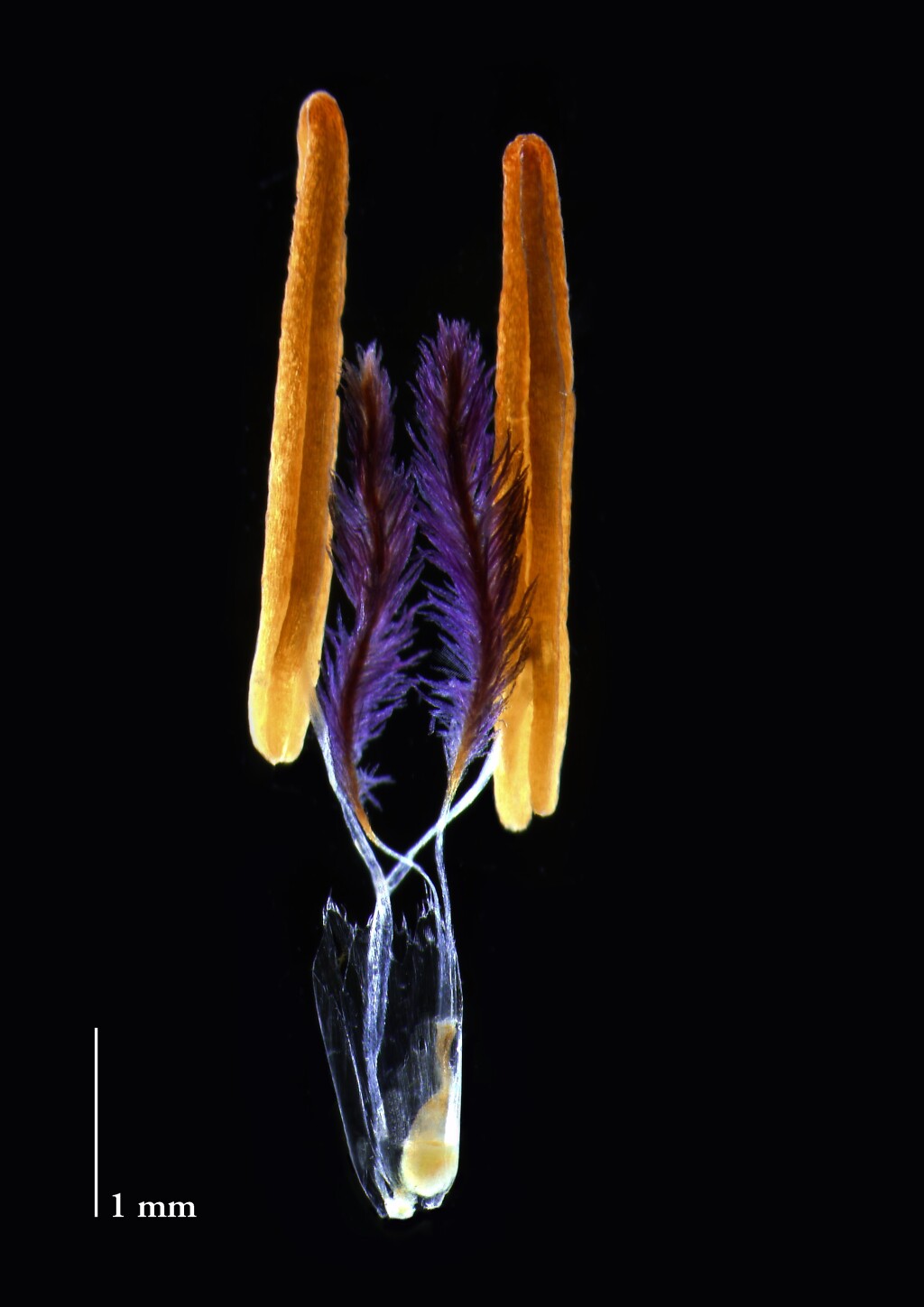Imperata cylindrica
(L.) Raeusch. Blady GrassCoarse, rhizomatous perennial, culms erect, to c. 100 cm (but usually nearer 50 cm) high. Leaves erect, glabrous except for silky hairs at the nodes and shortly above ligule; blade to 60 cm long and 1.5 cm wide, finely scabrous along margins and upper surface; ligule 1–3 mm long, shortly fringed, adjacent hairs to c. 5 mm. Inflorescence a dense, cylindric, spikelike panicle, 7–20 cm long, the spikelets obscured by copious fine silky hairs subtending and on back of glumes; glumes 3–7-nerved, 3–4 mm long, truncate, hairy, the lower slightly shorter than upper; sterile and fertile lemma c. 2 mm, palea c. 1 mm long, all truncate and very thinly membranous. Flowers Jan.–May.
LoM, MuM, Wim, GleP, Brid, VVP, VRiv, GipP, OtP, WaP, CVU, GGr, DunT, NIS, EGL, EGU, WPro, HSF, HNF, OtR, Strz, VAlp. Common on sandy-soils in many lowland sites (excepting Mallee area) and often forming dense swards. Flowering is infrequent (more commonly following fire), and the foliage unpalatable to stock except after fire or disturbance (slashing etc.).
Leaves often are tinged reddish around autumn. Red-leaved selections are grown for ornament, the origin of these is obscure, but probably from eastern Asia. A cultivar is known as 'Japanese Blood-grass'.
Plants from the tropics may be much larger than Victorian examples, with leaves to 3 m long often employed as thatching for huts (e.g. in Papua New Guinea where known as 'Kunai Grass').
Walsh, N.G. (1994). Poaceae. In: Walsh, N.G.; Entwisle, T.J., Flora of Victoria Vol. 2, Ferns and Allied Plants, Conifers and Monocotyledons, pp. 356–627. Inkata Press, Melbourne.
 Spinning
Spinning



